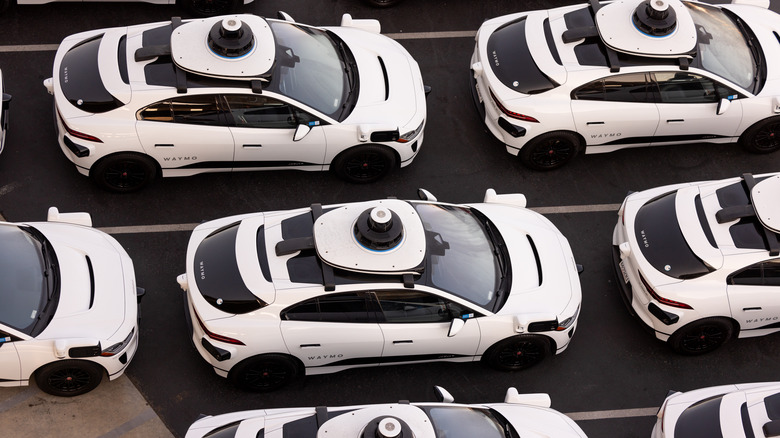New York Could Be The Next State In Waymo's Robotaxi Invasion
Geneva, a city in upstate New York, recently hosted an event that featured one of Waymo's self-driving robotaxis. This event was attended by State Senator Jeremy Cooney, the chair of the State Senate's Transportation Committee, as a way to promote New York legislation that would make self-driving vehicles legal to operate within the state.
While Waymo has received a permit from New York City to have up to eight of its robotaxis roaming the streets of Brooklyn and Manhattan with safety drivers behind the wheel, there is not yet any statewide legislation in effect that would permit Waymo's self-driving robotaxis to operate across New York without those drivers. In the meantime, Waymo is mapping the roads of upstate New York, including the city of Rochester. It is all part of Waymo's plan to spread to more cities across the U.S.
Once State Senator Cooney's legislation is passed and signed into law, Waymo will be free to add the streets and highways of New York State to its growing list of locations. Waymo currently operates in Los Angeles, Phoenix, San Francisco, Atlanta, and Austin, with Miami and Washington, D.C on the firm's "coming soon" list. Other cities to be added after those two include Las Vegas and San Diego. In a bid to expand its services beyond city streets, Waymo has recently added freeway driving for its robotaxi riders traveling in the Phoenix, Los Angeles, and San Francisco areas.
How Waymo expands into new cities
Waymo has a rigorous process to prepare each area it plans to operate in, long before the first robotaxi in that location turns a wheel. First comes a highly detailed mapping process, which shows all of the area's stop signs, lane markings, crosswalks, and curbs. Backed up by AI and information from their sensors, these maps are used to confirm that the robotaxi is exactly where it should be at any given point in time.
The Driver, which is what the Alphabet Inc.-owned Waymo calls its automated self-driving system, uses AI to see everything around it, both moving and stationary elements such as vehicles, pedestrians, road construction, and even bicycles. Based on the system's accumulated mileage, which amounts to more than 20 million miles in the real world and over 20 billion miles in simulations, the Waymo Driver can predict most situations before they happen.
The Waymo Driver's suite of sensors has been designed to let it see everything on the road around it in great detail. It uses three Lidar (Light Detection and Ranging) units to produce 3D images of the area around the robotaxi, along with cameras (29 on each of its Jaguar vehicles) and radar, which are all connected to the server-grade CPU that acts as the system's brain. To further validate the Waymo Driver system, the company tests its vehicles on closed courses, analyzes hazards, and runs crash avoidance scenarios.

